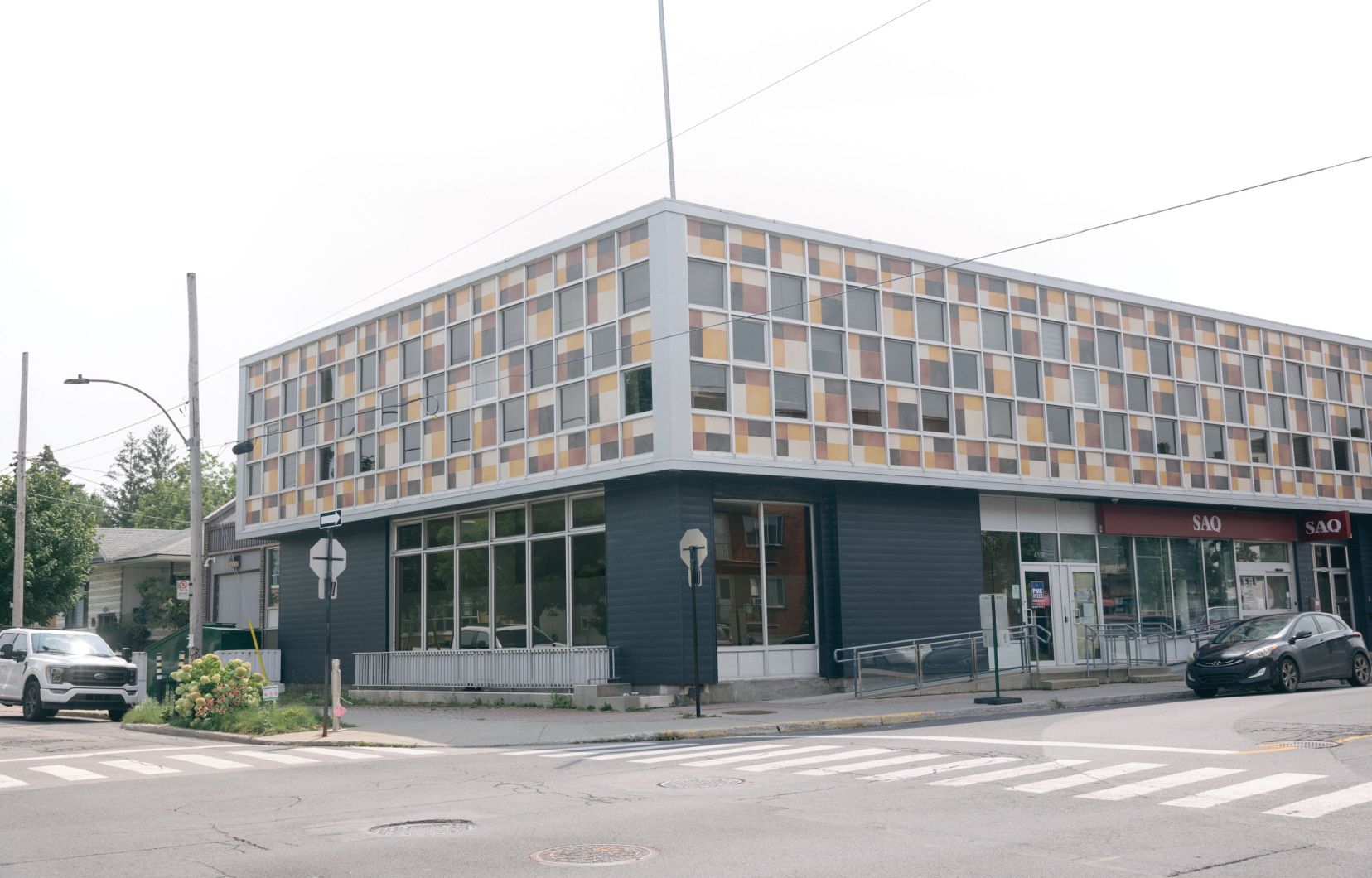A former Desjardins caisse in Plateau-Mont-Royal will be home to a daycare centre (CPE) by the end of September. At first glance, the building being transformed and built in 1966 does not seem exceptional, but the borough has required the new owner to preserve most of the building. Because despite its modest design, this building located on Gilford Street, at the corner of De Lanaudière Street, bears witness to a modernist period that inspired the architecture of several caisses in the wake of the Quiet Revolution.
For years, CPE Saint-Louis has been looking to move to larger premises to accommodate 164 children, rather than 84. That’s why it acquired the former Saint-Stanislas caisse in 2021 for $2.4 million. The simplest and least expensive scenario for carrying out the project would have been to raze the existing building to build a new one, admits CPE Saint-Louis general manager Lorraine Desjardins: “We would have already moved, that’s for sure!” she says.
But such a scenario did not take into account the intransigence of the Plateau-Mont-Royal borough, which is particularly picky when it comes to built heritage. Officials demanded that the building’s exterior shell, with its bay windows, stone façade and copper roof dating from the 1960s, be preserved.
“It’s quite an adventure. We’re a year behind schedule,” says M.me Desjardins. “It took a lot of thought.”
The original building had a mezzanine, while the CPE needed a full second floor. It was therefore necessary to adapt its structure. The old cash register also had a vault, where the administrative offices will be installed — without windows. “We even have marble beams. There are not many CPEs that have that,” notes M.me Desjardins.
Mme Desjardins expects all these constraints to increase the final bill for the project, which benefited from an initial subsidy of $6 million, to which is added the cost of purchasing the building.
The former Saint-Stanislas bank did not have any heritage protection status, but the Plateau borough has strict regulations. “You can’t just demolish a building, especially if it’s sound,” explains Mathias Losco, a planning advisor for the Plateau borough. “In this specific case, we have a building that has retained all of its characteristics. It was built in 1966 and is very typical of 1960s modernist architecture. It has several distinctive elements, such as eaves, vertical openings, stone cladding and openwork concrete blocks. It’s a building in good condition. After analyzing the condition of the building, we decided that it should be preserved.”
Avant-garde architects
Although modest in design, the former cash desk on Gilford Street still carries the spirit of the 1960s, acknowledges Georges Adamczyk, full professor at the School of Architecture at the University of Montreal.
In the past, the Desjardins Movement has been harshly criticized for the banality of certain caisses established in towns and villages in Quebec over the last few decades, but several caisses stand out for their avant-garde architecture.
Among them, in Montreal, the Saint-Henri Service Center (formerly called the Saint-Zotique Caisse) located at 4545 Notre-Dame West. Designed by architect Henri Brillon in 1965, the old caisse contrasts with the neighboring buildings with its two giant beams that hold up an accordion-shaped slab.
The former Saint-Jean-Vianney cash desk on Beaubien Street East in Rosemont stands out, even though it has undergone modifications over the past decade. Designed in 1960 according to plans by architect Bernard Dépatie, this cash desk originally featured a curtain wall made of tiles by artist Jordi Bonet.
And in Quebec City, the astonishing Notre-Dame-du-Chemin caisse, located at 900, avenue des Érables, and designed by architect Jacques Racicot in 1963, stands out from the surrounding landscape. It is reminiscent of the Guggenheim Museum in New York with the cylindrical shape of its main tower, formed of massive discs painted white. “I come from Quebec City and my mother opened an account for me at the Notre-Dame-du-Chemin caisse populaire. It’s one of the things that contributed to my becoming an architect,” admits architect Jean-Maxime Labrecque, who remains fascinated by the modernist architecture of some caisses.
And there are others — which have changed their purpose with the evolution of financial transactions and the gradual reduction of Desjardins’ real estate portfolio — such as the former Saint-François d’Assise caisse in Trois-Rivières, which now houses a community organization, or the Saint-Pascal-de-Maizerets caisse in Quebec City, converted into a private residence.
A gesture of affirmation
For Professor Adamczyk, this architectural effervescence coincides with the Desjardins Movement’s desire to make a bigger place for itself in the financial world, which led in particular to the construction of the Complexe Desjardins in Montreal in the 1970s. “We feel that it is part of a surge of affirmation in the economic world. We are moving away from an identity that was perhaps a little too marked by Catholic submission,” he says.
It was also the Quiet Revolution and the time when young architects were trying to break out of the straitjacket of the École des Beaux-Arts, he emphasizes. “All these young architects, like Henri Brillon or Jean-Marie Roy, wanted to break out of this model. This was part of a national affirmation,” he explains.
Dinu Bumbaru, Director of Policies at Heritage Montreal, believes that the architecture of Desjardins caisses remains unknown, while the big banks left behind more classical buildings in order to inspire confidence and an image of prosperity. “Desjardins’ heritage is not only toponymic or old photos of Alphonse Desjardins, but there are also buildings that were part of the hearts of villages.”
